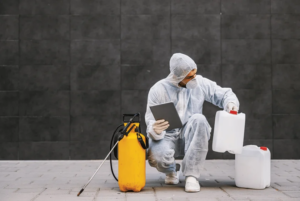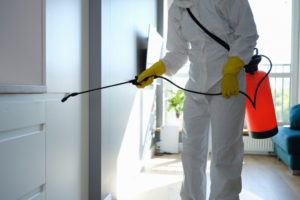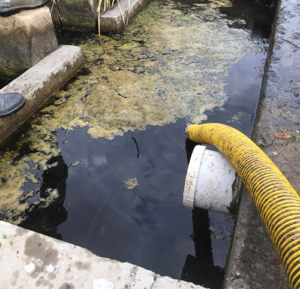Pest control is the action of controlling pests. There may be multiple ways to do this, including:
Ideally, we would not have pests, but when they occur, we must decide whether the harm they cause is acceptable. Natural forces influence pest populations, including climate, natural enemies, barriers, and food and water supplies. Contact Firehouse Pest Control Services now!

A pest is anything that damages your property or poses a threat to you or your family. Pests can be insects, rodents or even plants, weeds, bushes and vines. They may carry diseases that are harmful or unpleasant, or simply cause you discomfort.
Identifying pests is an important first step in addressing pest problems. Often, pests leave behind visible signs such as droppings, chewed food packages or discarded egg shells that can help you determine whether your problem is an infestation and needs to be addressed immediately.
It is also worth noting that a pest species can look very different as it progresses through its life cycle. A weed seedling can look nothing like its mature plant counterpart, and many insect species undergo significant changes as they develop from eggs to larvae, immature adults and then fully grown adults. This variation in appearance is one of the reasons why accurate identification is so critical to effective pest control.
Some natural forces affect all organisms and may help or hinder the efforts of pest control, such as climate, the presence of other organisms that compete with or prey on a particular species, the availability of shelter and food sources, natural barriers to migration and the availability of water. The most effective way to reduce the impact of natural forces on a particular pest population is through the use of Integrated Pest Management (IPM) strategies.
IPM programs combine a range of biological, mechanical and chemical controls to manage specific pests and their damaging effects on the environment and people. In order to be successful, a IPM program must be well-designed and properly implemented. Proper identification helps with the design of an IPM plan by ensuring that control methods are targeted to pests and not to other beneficial organisms or non-target organisms. Moreover, proper identification allows for the selection of effective products that minimize exposure to humans and the environment. It is also important to remember that pesticides kill all organisms that are susceptible to them, including beneficial insects and their larvae, and that the overuse of pesticides can lead to resistance in target organisms.
Choosing a Company
The first step in pest control is hiring a reputable company. Avoid rushing to hire the first one you find, as they might damage your home or use dangerous/unaccredited chemicals. Instead, get estimates from several different companies and consider value over cost. You might save money by going with the cheapest provider, but you may end up paying more in the long run due to inadequate treatment that leads to recurring pest problems.
You should also ask about the company’s experience and methods they use to treat specific pests. For example, some pests require specialized baiting techniques or heat treatments. You should also make sure they are licensed to treat the pests you have in your home or business and have appropriate insurance coverage. Some pest control companies offer a guarantee on their services, which is worth looking into. If they do not solve your pest problem, they will come back and make things right for no additional charge.
A quality pest control company will always prioritize safety. They should have the required certification to handle pesticides correctly, and they should use integrated pest management (IPM) methods that minimize chemical usage and environmental risks. If they have a pest control license, you can also check with your state’s pesticide regulatory agency to see any recent violations or complaints against the company.
Ask about the company’s employee screening and training. Do they conduct background checks and drug tests? Do they provide ongoing training and education for their technicians?
Some companies will send a salesperson to perform an initial assessment of the property and answer any questions. However, the technician who performs the actual treatment will be a separate individual. This person should be able to describe the pest infestation and damage and give you an estimate of what’s needed to treat the pests.
It’s also important to inquire about whether or not the company is a member of any professional associations and what their code of ethics is. Being a member of a professional association means the company is committed to keeping up-to-date with new methods and practices, as well as promoting safety and education among their employees.
Getting an Estimate
As you compare pest control companies, pay special attention to their customer service. Ask about their training and experience, and how they handle pest problems similar to yours. Find out whether they provide a free estimate and how much their services cost. If you need a pest control company to respond quickly, choose one with a local office. This will give them greater flexibility to get to your home or business quickly.
When choosing a pest control company, make sure they have the right licenses and insurance. A valid license shows that the company has been approved to use chemicals and other treatments by your state’s pesticide regulatory agency. This protects you and the company from lawsuits or fines.
The best way to determine if a company is reputable is to read reviews and ask for references. If possible, look for a family-owned and operated pest control company. This type of business will be more committed to its reputation and customer satisfaction.
You should also consider a company’s treatment options, including their safety measures. For example, some pests require a more aggressive treatment than others. If you have children or pets, you should ask about safe treatment methods. Some pests spread illnesses and allergens, such as ticks, that can aggravate pre-existing conditions or threaten the health of your family members. Pests can also damage major home systems and appliances, resulting in expensive repairs. Preventative pest control reduces these risks.
Pest control prices vary according to the type of pest and the extent of the infestation. Infestations that are more deeply established will be more difficult to treat and may cost more to resolve. If you have a termite infestation, for example, it may require an entire house fumigation, which can cost up to $8,000.
Other factors that affect pest control pricing include the location and size of the property, and the type of pests that need to be treated. In addition, some pests need to be addressed during certain seasons. For instance, rodents are more active during the spring, making prevention a priority.
Getting Started
Getting started with pest control can be daunting, but it is possible to build a lucrative and fulfilling business from the ground up. A good plan and some solid resources are essential.
Before you start putting your plans in place, research the local market and competition to get an idea of pricing. Many pest control services are subscription-based, so figuring out how to structure your prices is important. Determining a profit margin is also vital.
Once you’ve established your market and pricing, you need to decide how you will operate the business. You can choose to go it alone, working as a sole proprietor or in partnership with others. As you’re making this decision, consider the advantages and disadvantages of each. A sole proprietorship offers more simplicity and less paperwork, but it’s up to you to carry out all the responsibilities of the business. Partnerships offer shared control and pass-through taxation, but they can require more documentation and liability protection.
When starting a pest control business, be sure to adhere to all state and local regulations on pesticide use and storage. You will also need to acquire a pesticide applicator’s license, which requires passing an exam and having the proper equipment. You’ll need a truck to transport equipment, a sprayer and dusters, personal protective equipment like respirators and safety glasses, and traps and bait for specific pests.
Another consideration when starting a pest control business is hiring and training employees. The right staff will improve service quality, increase customer satisfaction and help you grow your business. You should look for technicians who have the technical skills, licenses and experience you need. It’s also worth considering investing in employee training, which will pay off in the long run.
Finally, you’ll need to get insured. General liability insurance is a minimum requirement, safeguarding against property damage and bodily injury. Other coverages to consider include workers’ compensation for employees, commercial auto insurance for your trucks and professional liability insurance for negligence claims. Make sure to shop around for competitive rates and consult a licensed insurance agent for more information.








